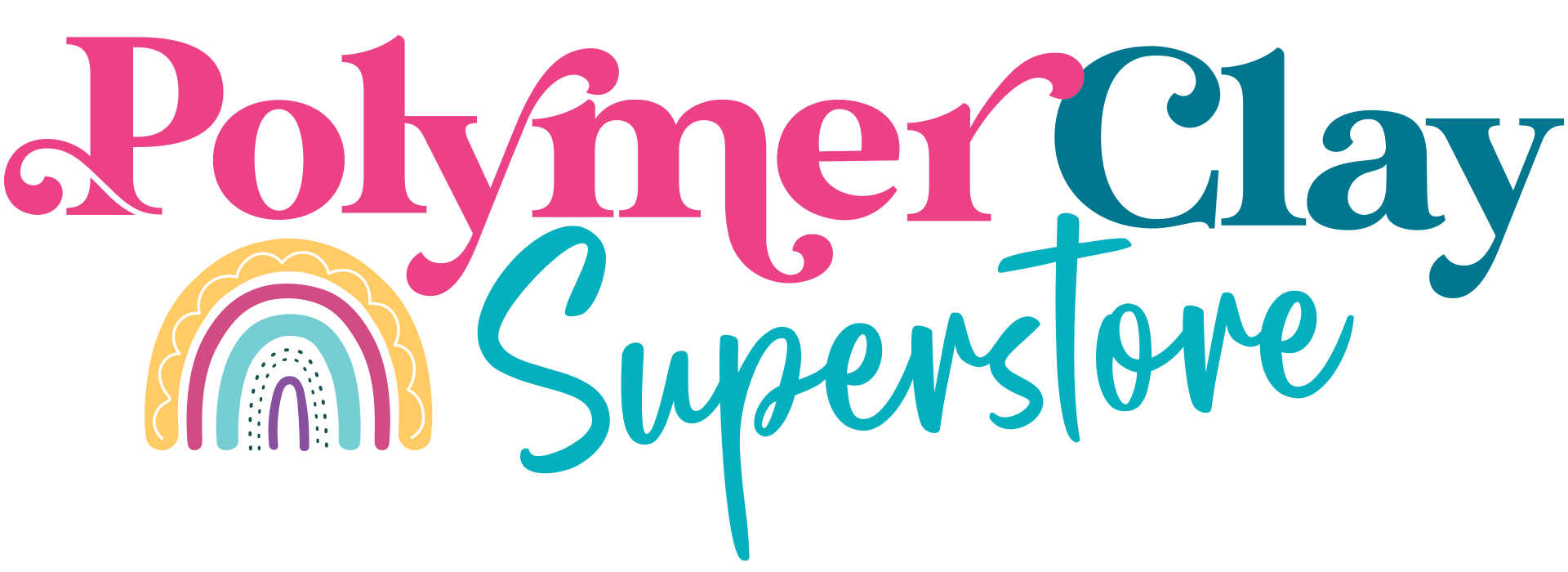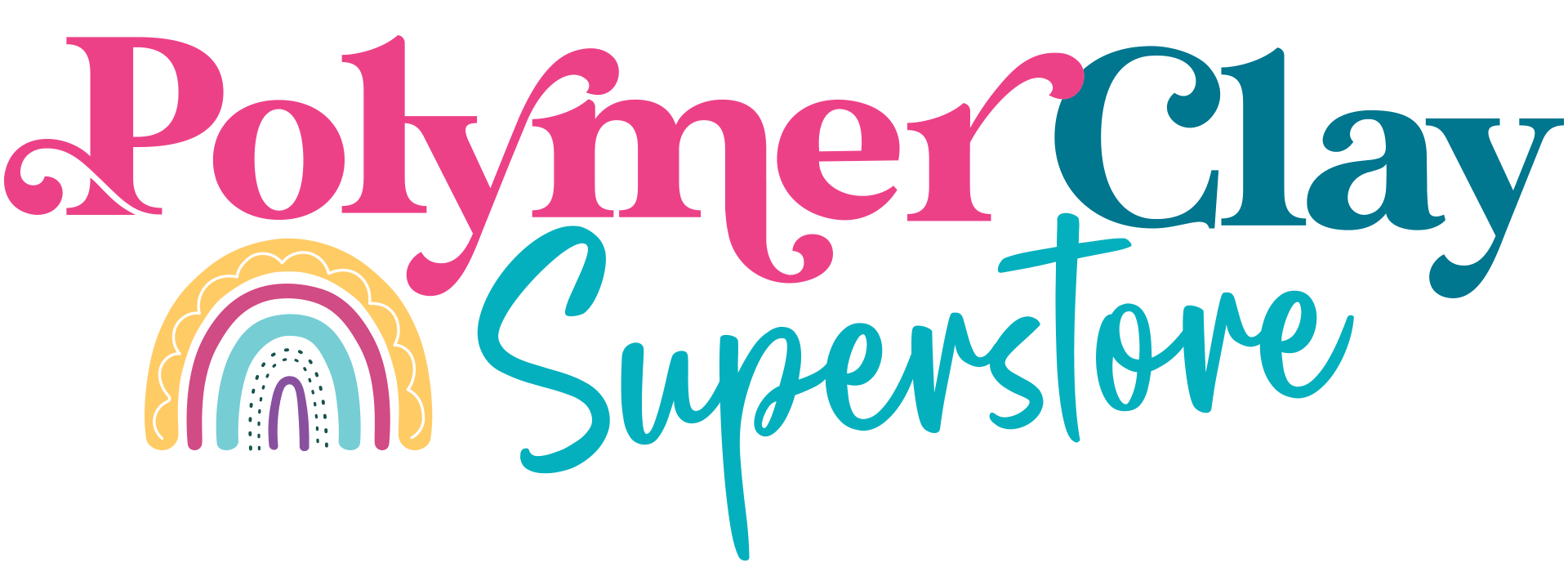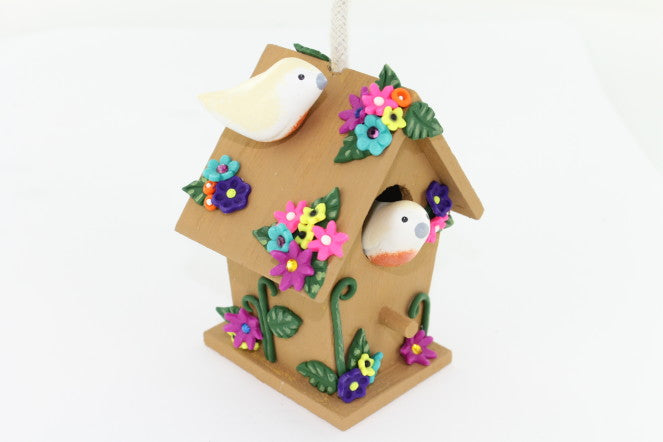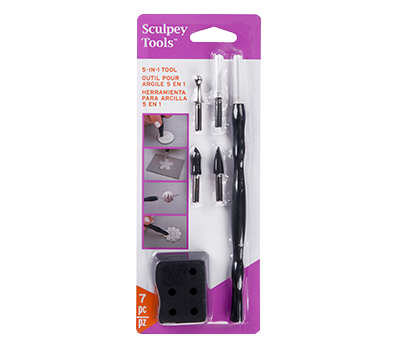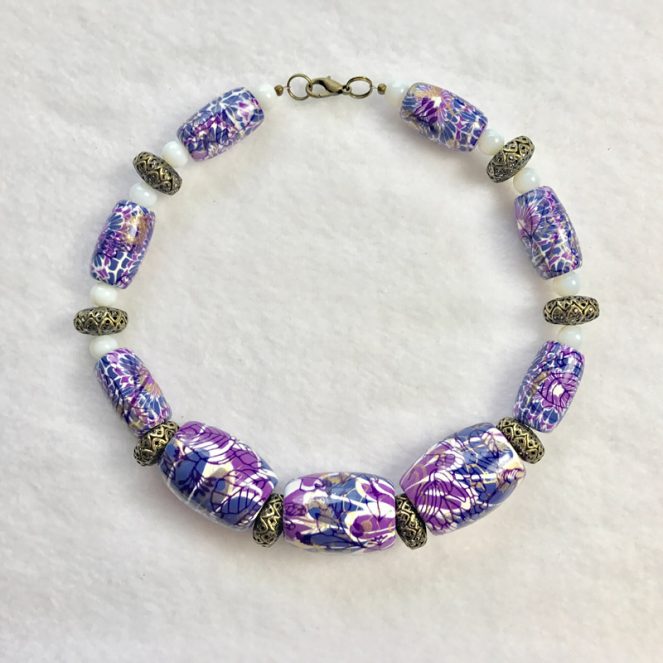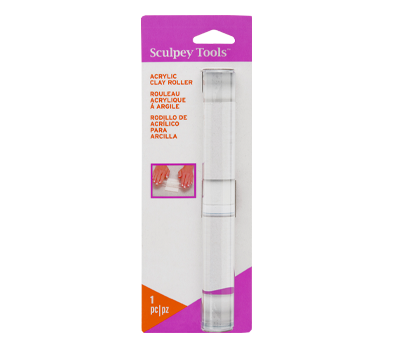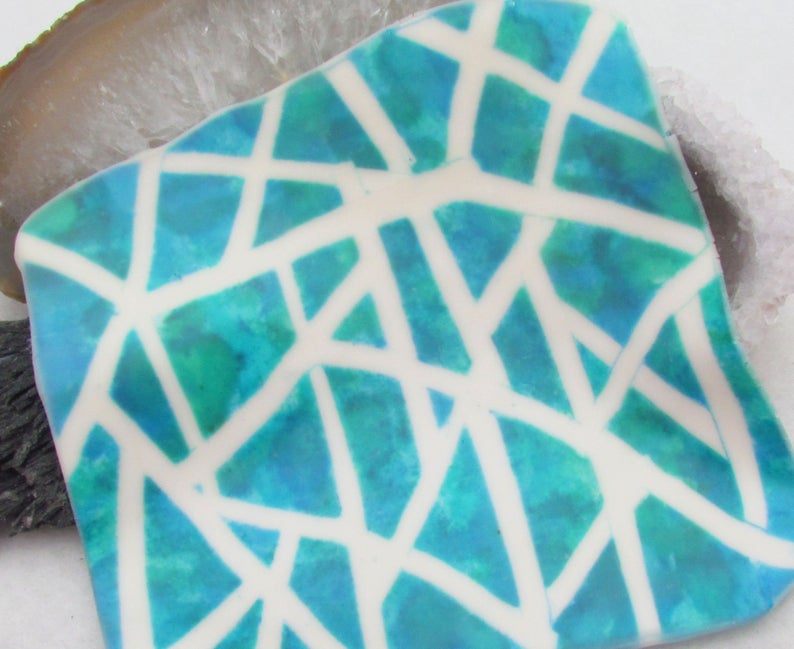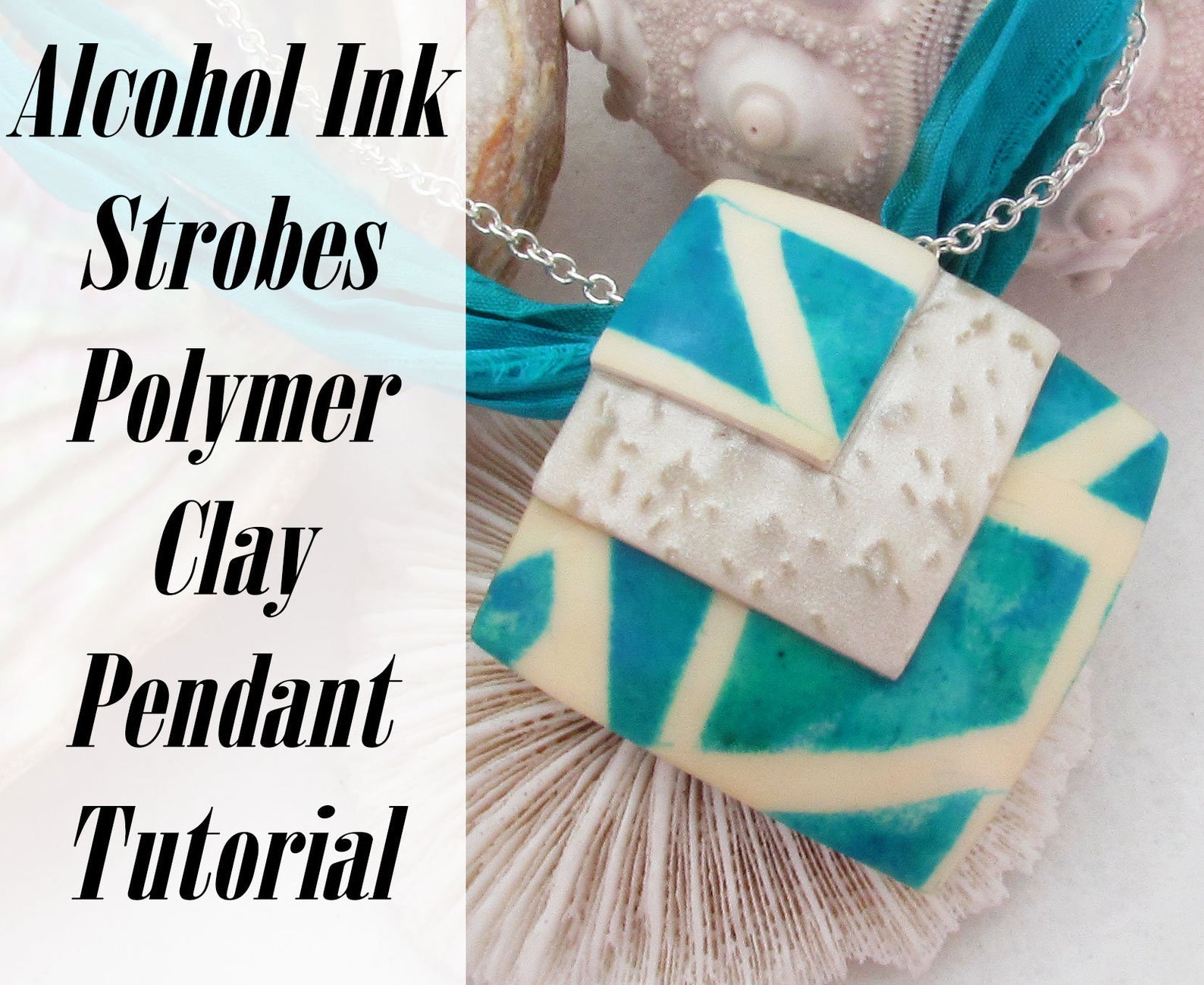Types Of Clay
Original Sculpey is just that, the original clay from Polyform Products. Sculpey is soft and pliable, works and feels like ceramic clay, but will dry out when exposed to air. It is available in white and the new Terra Cotta, and will have a bisque finish. It is used in classrooms and is the most economical choice. It is recommended for bulkier projects and may become brittle in thin areas after curing.
Super Sculpey is a more durable development of the Original Sculpey, and can be "carved" and used for projects requiring fine details. Beige-pink in color, it is easy to condition, maintains fine tooling and detailing and will have a matte, slightly translucent finish. It is used for mold-making, by movie studios and professionals world wide and is a favorite with doll-makers, having a finished porcelain look to it.
Sculpey III is popular for its softness, finish, and variety of vivid colors. Sculpey III has won parenting awards and is easy to condition and use, making it the perfect clay for children as well as adults. Once cured, Sculpey III bakes hard and takes on a matte, bisque type finish. Sculpey III maintains tooling and details and can be used for figurines, jewelry, home decor and millefiore canes. Sculpey III can be easily mixed to form your own custom palette and can be mixed with other polymers such as Prēmo! Sculpey.
Sculpey Souffle is an innovative lightweight clay perfect for jewelry making! Its strength and ability to hold detail makes it an excellent clay for advanced techniques such as mokume gane, bargello and caning. It is strong and self supporting and doesn’t crack in large pieces which makes it great for larger clay projects as well. Beautiful suede finish when baked.
Premo! Sculpey is a popular choice for its strength and beautiful colors. It was developed as a result of artists' ideas of the perfect polymer clay. Although it may seem stiff at first, it is easy to use and stronger than the Sculpey III. It holds sculpting lines well and also is used as a "backing" with other clays. It comes in an array of colors, including metallics and pearlescents, making it a beautiful choice for jewelry. Its colors are based on the Grumbacher color line, making it possible to mix like paint. It finishes as a natural, satin look that can be sanded to a semi-gloss.
Sculpey Super Flex Bake & Bend is the make it and play with it clay. It is a great new clay that stays bendable after baking. This clay little stiffer than the other clays, but warming it under a light bulb will ease the conditioning process. Once softened, this clay is easy to work with. Its bendability after baking makes it perfect for figures and dolls that can be posed and flexible jewelry.
Sculpey Ultra Light is a new clay by Sculpey that boasts a light weight, ease to handle and strength after baking. This clay even floats-making it perfect for projects like bath toys or floating candle holders. It also ideal for paper crafts, and keeping jewelry and ornaments light.
Transclucent Liquid Sculpey is a pourable clay that becomes translucent with baking. Colors can be made by mixing it with paints and powders. It is essential as an adhesive between clays or clays and other surfaces. It is perfect for transfers, "stained glass", or adhering clay to jewelry findings.
Conditioning Clay
Conditioning polymer clay can be a fairly quick and easy process. Condition only one package of clay at a time (and be sure to wash your hands in between to avoid accidental mixing of colors). Begin by warming the clay between your hands, and then kneading and stretching it until is becomes soft and pliable. Pasta machines can be used as aide to conditioning. Set the machine on its widest setting and feed chunks through the machine. The firmer clays may take a few minutes, Sculpey III can be conditioned in seconds! If clay gets too soft, let it sit for a few minutes and it should be ready to work with again.
Mixing Colors
To create your own colors, polymer clay can be formulated like paint, or colored with powders, chalk, ink, glitter, colored pencils, powdered makeup and paint. For instruction on blending, see below for Skinner Blends.
Technique Glossary
Bead/Button Work
 Beadwork is a beautiful way to show off your polymer clay expertise! Beads and buttons can be formed by simply marbling and rolling clay together to form balls or rolling from layers to make "rolled paper" beads. As well as rolling, clay can be wrapped around existing wooden beads for uniform shape. Millefiore or Skinner blends can be used also to create one of a kind beads. Don't forget to use a skewer or large needle to pierce before baking. A Bead Baking Rack can keep beads perfect while baking.
Beadwork is a beautiful way to show off your polymer clay expertise! Beads and buttons can be formed by simply marbling and rolling clay together to form balls or rolling from layers to make "rolled paper" beads. As well as rolling, clay can be wrapped around existing wooden beads for uniform shape. Millefiore or Skinner blends can be used also to create one of a kind beads. Don't forget to use a skewer or large needle to pierce before baking. A Bead Baking Rack can keep beads perfect while baking.
Jewelry
 Polymer clay jewelry is an infinite array of creativity and innovation. Clay can be used to form beads, stones, and glass-like or transfer art for your jewelry collection. Jewelry findings can be attached to the clay using wire or liquid clay.
Polymer clay jewelry is an infinite array of creativity and innovation. Clay can be used to form beads, stones, and glass-like or transfer art for your jewelry collection. Jewelry findings can be attached to the clay using wire or liquid clay.
Jewelry can be hung on wire, fishing line, or with larger holes, leather or satin. Try Sculpey Ultralight to keep your pendants and beads light to wear!
Millefiore (canework)
 Millefiori has its origins in Italian glasswork. It is the process of creating clay rods, or canes, which contain multicolored patterns which are seen at the ends. This technique is often referred to as caning and can produce an array of designs, ranging from simple blends to intricate faces and flowers. This technique takes some practice but produces unique results well worth the effort. Caning can be used with almost anything in clay art. There are numerous books and web resources available showing this technique and project ideas.
Millefiori has its origins in Italian glasswork. It is the process of creating clay rods, or canes, which contain multicolored patterns which are seen at the ends. This technique is often referred to as caning and can produce an array of designs, ranging from simple blends to intricate faces and flowers. This technique takes some practice but produces unique results well worth the effort. Caning can be used with almost anything in clay art. There are numerous books and web resources available showing this technique and project ideas.
Mokume Gane
 Mokume game is the technique of shaving layered pieces of clay. It originates from 17th century Japanese metalworking, when it was used specifically to make Samauri swords. It is done by stacking layers of clay and often leafing foil and then shaving to create rings and graining.
Mokume game is the technique of shaving layered pieces of clay. It originates from 17th century Japanese metalworking, when it was used specifically to make Samauri swords. It is done by stacking layers of clay and often leafing foil and then shaving to create rings and graining.
Scrapbooking Embellishment
 Baked Premo! Sculpey has been tested and proven to be both acid and lignin free, creating an opportunity to expand your clay and scrapbooking creativity! Use clay with push molds, stencils, texture sheets and more to create pages that really "stand out"! Clay is a great way to personalize pages and add eye-catching embellishments. Filigree corners or texture frames can be used to bring out color in pictures and stamping or transferring allows you to set your wording in clay.
Baked Premo! Sculpey has been tested and proven to be both acid and lignin free, creating an opportunity to expand your clay and scrapbooking creativity! Use clay with push molds, stencils, texture sheets and more to create pages that really "stand out"! Clay is a great way to personalize pages and add eye-catching embellishments. Filigree corners or texture frames can be used to bring out color in pictures and stamping or transferring allows you to set your wording in clay.
Skinner blends
 The Skinner Blend is a technique invented by Judith Skinner that involves geometrically layering colors of clay and feeding them through a pasta machine to create beautiful blends that can be used in caning, beadwork and more!
The Skinner Blend is a technique invented by Judith Skinner that involves geometrically layering colors of clay and feeding them through a pasta machine to create beautiful blends that can be used in caning, beadwork and more!
Technique definitions taken from sculpey.com
